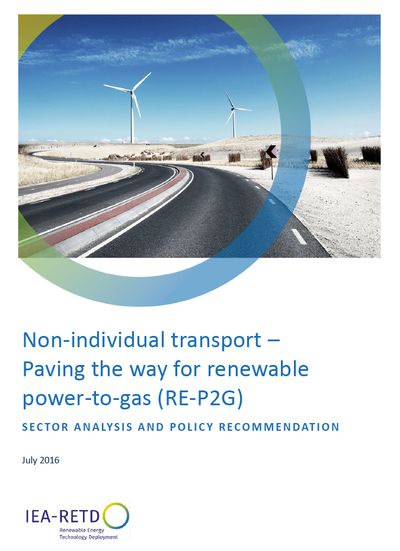Non-individual transport - Paving the way for renewable power-to-gas

Blunomy (Enea Consulting) carried out a study for the International Energy Agency Renewable Energy Technology Development (IEA-RETD) on the potential of renewable power-to-gas for the non-individual road transport sector. Indeed, mobility is the most viable market for power-to-gas. The study goes through an analysis of mobility uses and technology paths, Total Cost of Ownership (TCO) modelling and policy measures in order to provide recommendations on the potential of renewable power-to-gas mobility and on strategies and policy support to be set up to foster its development at large scale.
To be environmentally sound, power-to-gas must be based on fully, or close to fully, renewable electricity
Power-to-gas could hardly be a green mobility option without relying on renewable electricity. The access to renewable electricity for power-to-gas production plants implies some constraints on their operating conditions (i.e. number of yearly operating hours, price of electricity).
Captive fleets of long-range light duty vehicles are the most promising market segment for early adoption of power-to-gas technology
On short ranges, power-to-gas is out-competed by the battery electric option which is inherently more energy efficient and benefits from a higher development status on the market. The development of power-to-gas mobility should thus focus on long range uses where battery-electric vehicles are not suited due to range constraints.
Renewable power-to-gas in the mobility sector will not grow without strong policy support
Whatever the market segment, renewable power-to-gas mobility cannot compete with fossil options or with the cheapest renewable options (i.e. batteries and biomethane) without significant policy support. The regulation on renewable fuels in transport should at least include higher requirements in terms of share of renewable fuels at the distribution infrastructure level. In parallel, tax exemptions on electricity consumed and fuel produced should be granted to power-to-gas plants running on renewable electricity. Subsidies for hydrogen distribution infrastructure, green public procurement and direct financial support to private fleet operators are other recommended policy measures for power-to-gas deployment at larger scale.